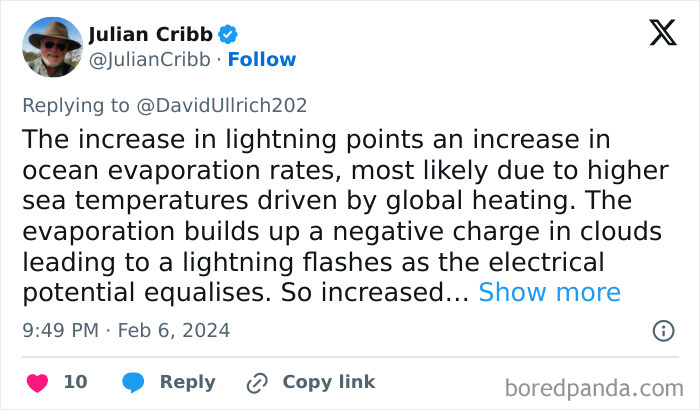I guess I’m not the only one obsessed with lightning. It is definitely one of nature’s most recurrent and common spectacles. Around the world, there are over 3,000,000 flashes every day: around 44 strikes every second! And what could be more beautiful than watching endless bursts of them over the ocean, apparently the place where they are more dense?
More information: New Scientist
New Scientist recently reported a new type of thunderstorm, responsible for the most intense lightning ever observed
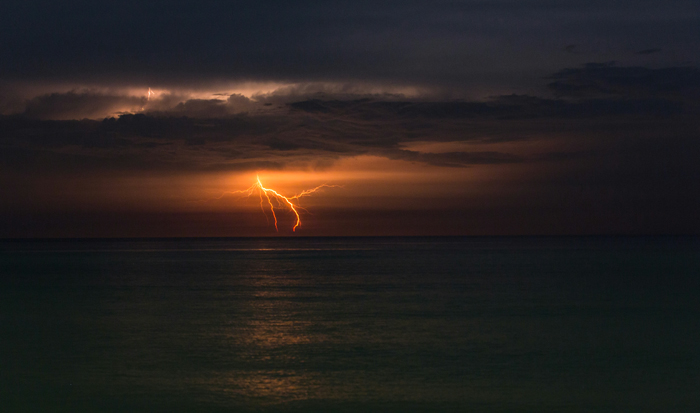
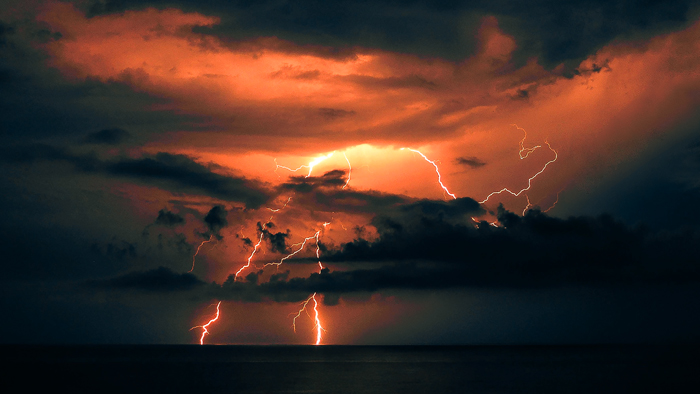
Image credits: Alexander Grigorian
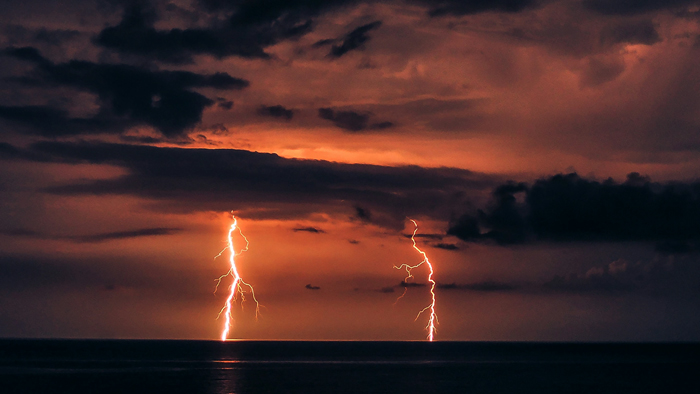
Image credits: Alexander Grigorian
Observation from Earth-orbiting satellites shows that around 80 percent of lightning occurs over land and only 20 percent over the oceans, yet when it comes to intensity, the storms on the ocean surface seem much stronger.
The most extreme storms, as told by Michael Peterson, who works at Los Alamos National Laboratory in New Mexico, usually take place in the Gulf of Mexico and east of South Africa.
“There are such high flash rates over the ocean that they even outshine all the land-based cases,” says Peterson.
An example of such could be lightning in a big storm in the Indian Ocean, May 1998. It was flashing eight times per second, a rate so high that most human eyes would perceive the thundercloud as lit up continuously.
Image credits: New Scientist
Some land-based storms, better known as mesoscale convective systems, technically have the highest overall flash rates, yet marine thunderstorms usually happen within a smaller area and this is a reason why they are more intense.
These compact “lightning-dense” storms were previously underappreciated because their lightning flashes in a tempo too quick for accurate measurement by automated detection systems.
This thunderstorm complex was found by the World Meteorological Organization to be the longest flash on record that covered a horizontal distance of 477 miles
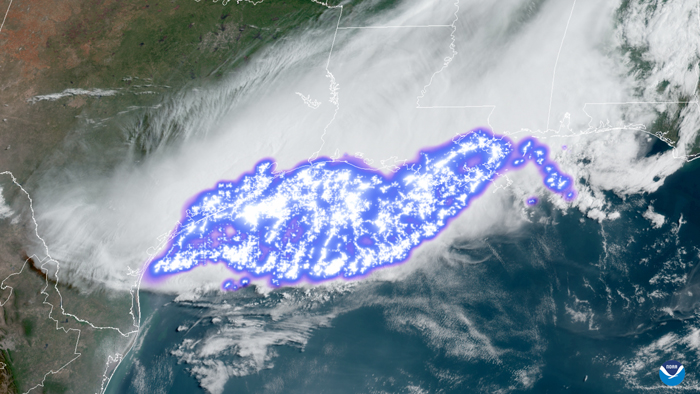
Image credits: NOAA’s GOES-16 Satellite
Rare “superbolts,” with flashes 100 or 1,000 times brighter, are more likely to hit the ocean and such lightning is more powerful than a regular bolt. Marine scientist Mustafa Asfur made yet another discovery: why bolts of lightning are brighter over the ocean than they are over land. Asfur discovered that, in the lab, at least, lightning-like discharges are brighter over salt water than over fresh water or soil.
“We were surprised. Everyone believed, including myself, that something in the thunderstorm controls the intensity of the flash; something in the cloud,” said atmospheric scientist Colin Price of Tel Aviv University in Israel. Yet the study showed that what lies beneath has a big effect on brightness.
Earth sciences professor Robert Holzworth, who manages the World Wide Lightning Location Network, said that the research “is a nice step towards showing that the salty oceans and seas could be responsible for more intense lighting on average.” But he also added that “there’s a big difference between that small-scale lab study and actual lightning. There’s a whole bunch of dynamic processes that weren’t included.”
In a 2019 study named Global Distribution of Superbolts, Holzworth and his colleagues surveyed two billion lightning strikes recorded between 2010 and 2018 and mapped out 8,000 intense superbolts, the vast majority of which hit the ocean.
They notice that indeed, there were some strokes over all continents, but the three most dominant superbolt regions were in the eastern North Atlantic, the Mediterranean, and over the Andes Mountains in South America – the only terrestrial site.
Indeed, there are some strokes over all continents, but lightning-dense thunderstorms are a maritime phenomenon
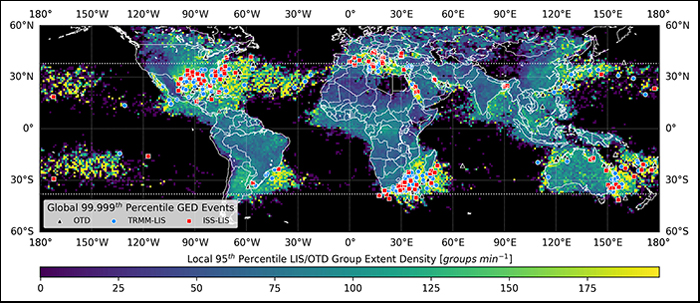
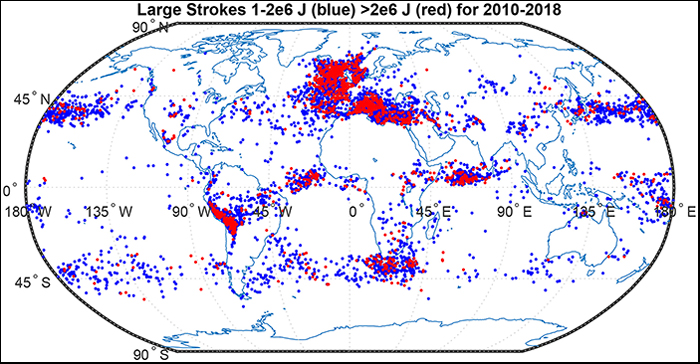
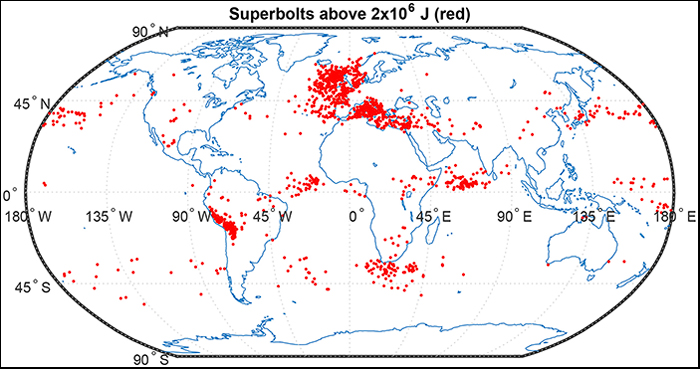
Image credits: Advancing Earth And Space Science
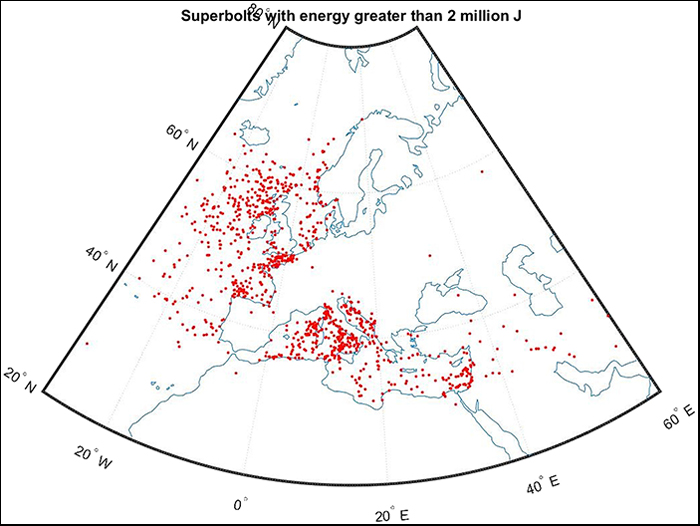
Image credits: Advancing Earth And Space Science
Scientists are still trying to work out whether measures of bolt energy (which is what Holzworth’s superbolt survey looked at) show the same information as measures of total bolt brightness (which is what Asfur was studying).
Salt content can’t explain the entire map of superbolts, but it maybe could contribute to the hotspot over the salty Mediterranean.
Some researchers believe that also, climate change might lead to brighter lightning. North Atlantic is getting cooler as ice melts, while other regions, in the subtropical Pacific, are getting saltier as evaporation ramps up under hotter air, ocean acidification is adding hydrogen ions to water, all of which may cause more intense superbolts.
Some superbolts over the ocean outshine all the land-based cases
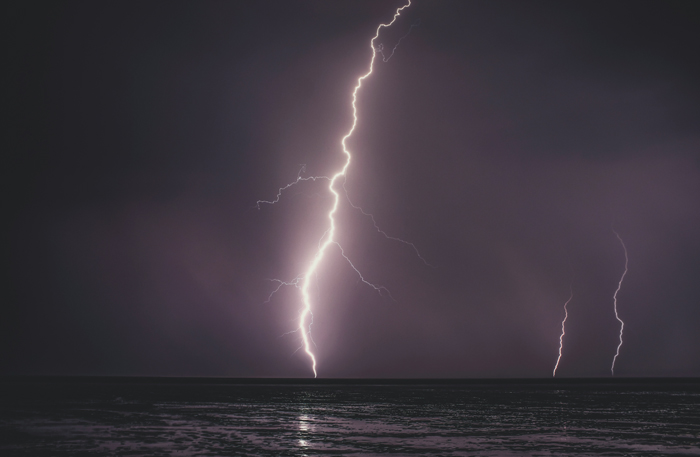
Image credits: Zoltan Tasi
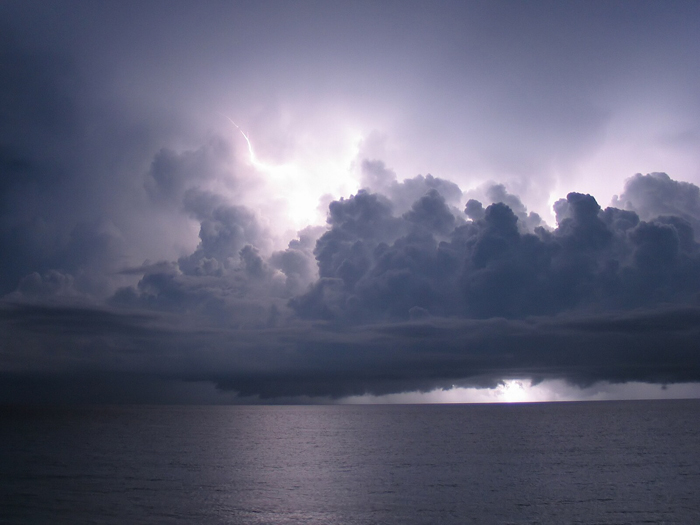
I guess it’s also important to explain here better what a superbolt is and what’s the difference from casual lightning.
The average lightning strike usually produces roughly 1,000 to 5,000 megajoules of energy – enough to power a 60-watt light bulb for over six months. The term “superbolt” was mentioned in a seminal study published in 1977 for flashes that pierced the sky with 1,000 times more light and energy than that.
Superbolts make up less than 1% of total lightning, but when they do strike, they make a very powerful punch.
“Superbolts, even though they’re only a very, very tiny percentage of all lightning, they’re a magnificent phenomenon,” said Avichay Efraim, a physicist at the Hebrew University of Jerusalem.
Storms with the highest density of flashes occur over the ocean, mostly through the Gulf of Mexico and east of South Africa
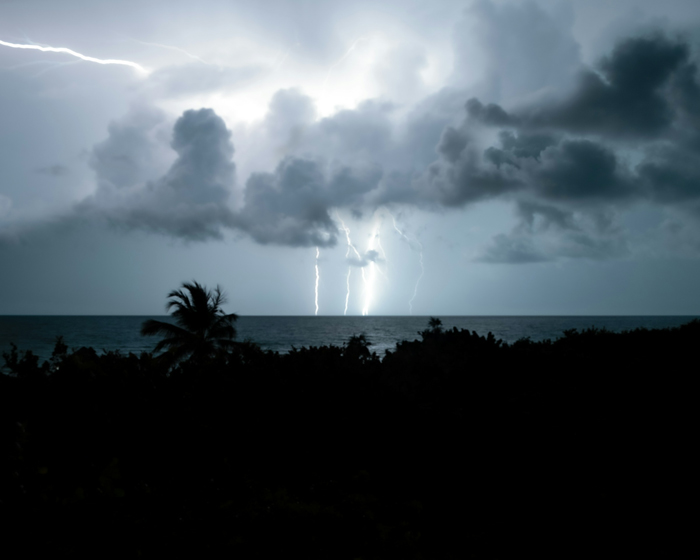
Image credits: Jeffrey Grospe
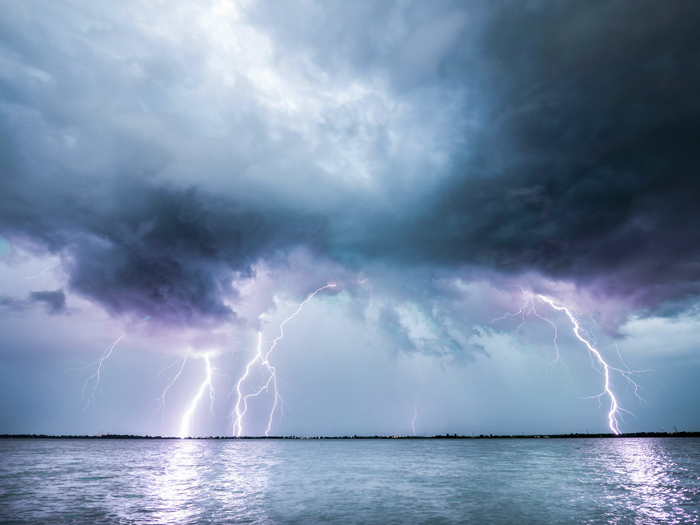
Image credits: Raychel Sanner
“There is much more unknown, but what we’ve found out here is a big piece of the puzzle,” Efraim said. And indeed, who could have thought that the densest lightning on earth occurs over the ocean, not land?
People were sharing their thoughts on social media

